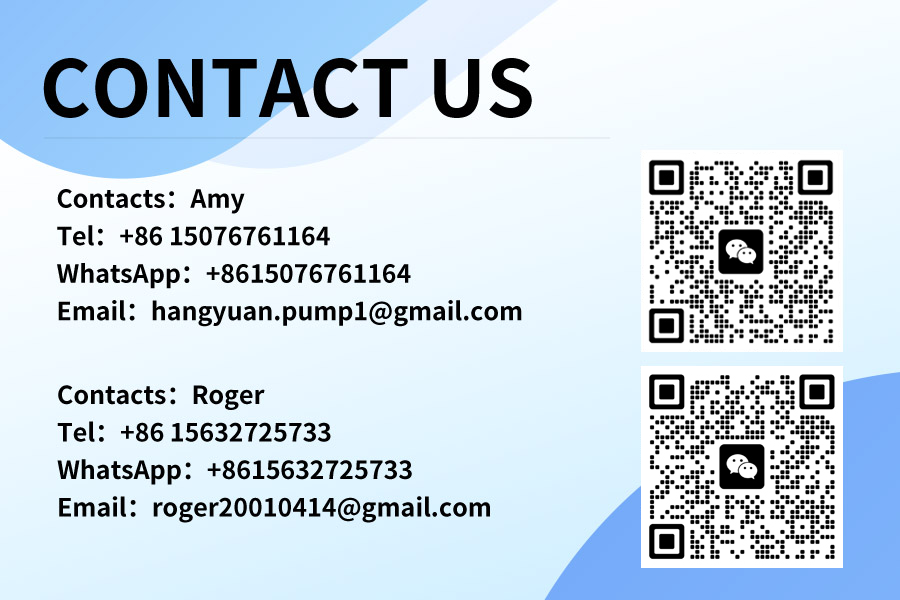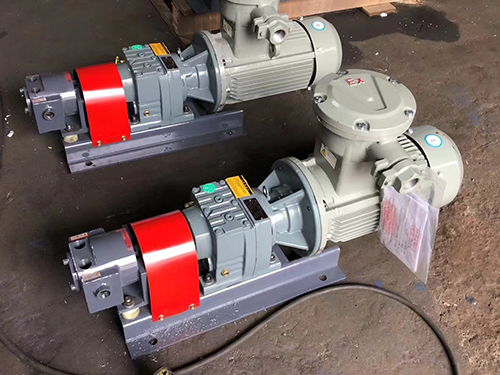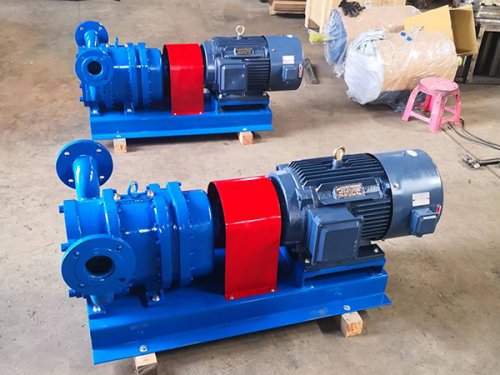Installation skills for sealing components of KCB gear pump
Release time:2022-10-06 14:49:47 Author:航源泵业 Hits:162
Firstly, let's introduce the working principle of the gear pump. Only by understanding its working principle can we correctly install the sealing components
A gear pump is a rotary pump that relies on the variation and movement of the working volume between the pump cylinder and the meshing gear to transport liquid or increase pressure. Two enclosed spaces are formed by two gears, the pump body, and the front and rear covers. When the gears rotate, the volume of the space on the disengaged side of the gears increases from small to large, forming a vacuum that sucks in the liquid. The volume of the space on the meshing side of the gears decreases from large to small, and the liquid is squeezed into the pipeline. The suction and discharge chambers are separated by the meshing lines of two gears. The pressure at the discharge port of a gear pump depends entirely on the resistance at the pump outlet The concept of a gear pump is very simple, that is, its basic form is two gears of the same size meshing and rotating together in a tightly fitted housing. The interior of this housing is similar to an "8" shape, with two gears installed inside, and the outer diameter and sides of the gears tightly fitting with the housing. The material from the extruder enters the middle of two gears at the suction port and fills this space. It moves along the shell with the rotation of the teeth and is then discharged when the two teeth mesh In terms of terminology, a gear pump, also known as a positive displacement device, is like a piston in a cylinder. When one tooth enters the fluid space of another tooth, the liquid is mechanically squeezed out. Because liquid is incompressible, liquid and teeth cannot occupy the same space at the same time, thus the liquid is eliminated. Due to the continuous meshing of teeth, this phenomenon occurs continuously, providing a continuous discharge capacity at the pump outlet. The discharge capacity is the same for each revolution of the pump. As the drive shaft rotates continuously, the diaphragm pump also continuously discharges fluid. The flow rate of the pump is directly related to the pump speed In fact, there is a small amount of fluid loss inside the pump, which makes the operating efficiency of the pump unable to reach 100%. This is because these fluids are used to lubricate both sides of the bearings and gears, and the pump body also adheres to the contract, which may have no clearance fit, so it cannot discharge the fluid 100% from the outlet. Therefore, a small amount of fluid loss is inevitable. However, the pump can still operate well and achieve an efficiency of 93% to 98% for most extruded materials For fluids with changes in viscosity or density in the process, this magnetic pump will not be greatly affected. If there is a damper, such as a filter or a limiter placed on the discharge side, the pump will push fluid through them. If the damper changes during operation, that is, if the filter becomes dirty, clogged, or the back pressure of the limiter increases, the pump will still maintain a constant flow rate until it reaches the mechanical excellence of the weakest component in the device (usually equipped with a torque limiter) Below, I will introduce the installation techniques for KCB gear pump seals1. When installing sealing components for gear oil pumps, it is important to pay attention to balance and symmetry.
Place the sealing components in a position that precisely fits the sealing surface (or lip line) with excellent sealing effect. After installation and use, further observation and follow-up work should be carried out on the sealing components to prevent micro leakage caused by changes in operating conditions (such as pressurization) during system operation.
2. When installing sealing components for gear oil pumps, do not damage the sealing surface or sealing line.
The lip line (sealing line) between the upper and lower end faces of the flat sealing component and the hydraulic sealing component hole or shaft determines the sealing performance of the sealing component. The sealing materials in these parts of the sealing component must have temperature resistance, be based on actual reports, and have aging properties. Therefore, they are all made of graphite, rubber, and other materials that are both soft and elastic.
Special materials such as fibers are prone to damage, so it is even more necessary to provide special protection and care to the sealing surface or sealing line of the sealing element during the installation process. Once damaged, it often leaves great hidden dangers and losses to the sealing areaMORE
-
What is the difference between a cam rotor pump and a gear pump?
2022-12-16
-
Precautions and performance characteristics when using stainless steel gear pumps
2022-10-06
-
Installation skills for sealing components of KCB gear pump
2022-10-06
-
The Application of YCB Stainless Steel Arc Gear Pump
2022-10-06
-
Issues to be paid attention to during installation, use, and debugging of YCB arc gear pump
2022-10-06













